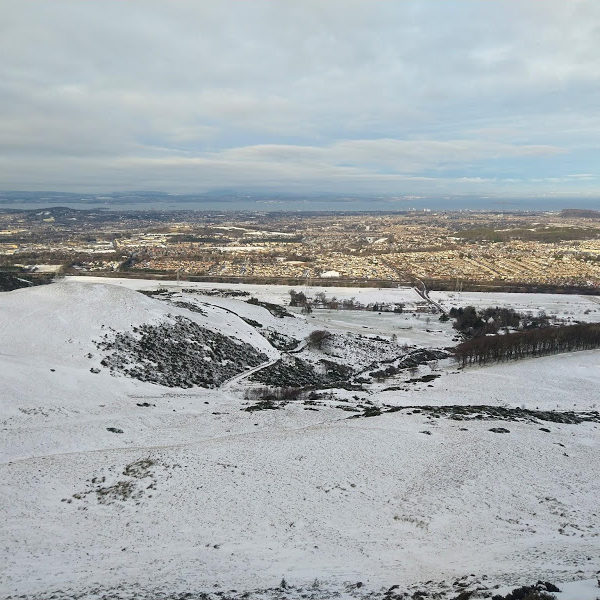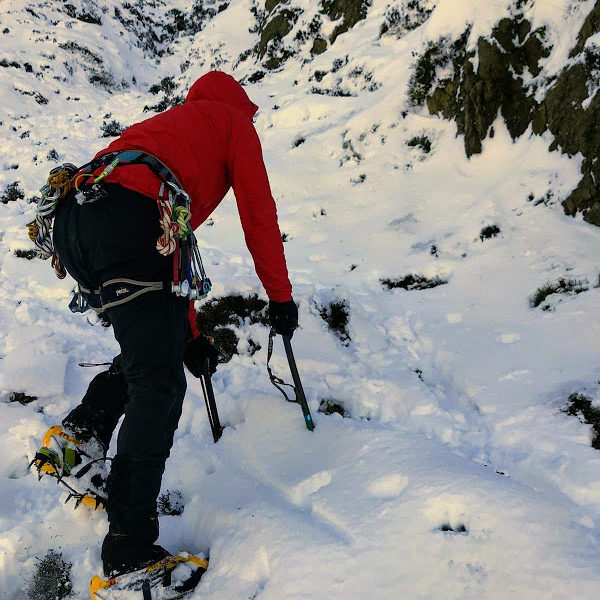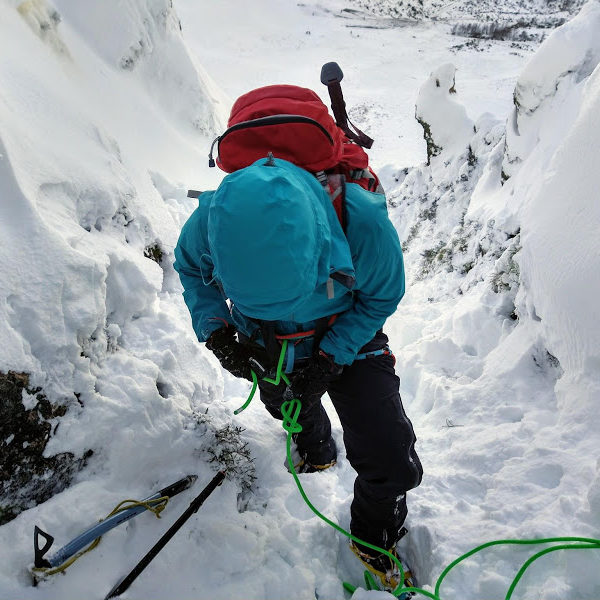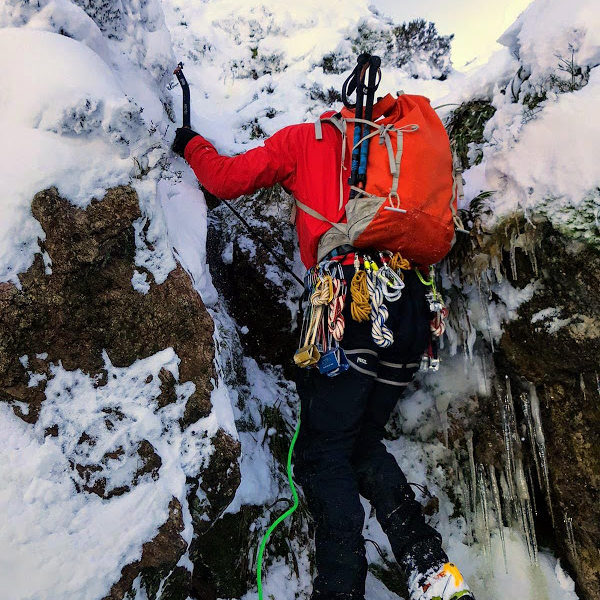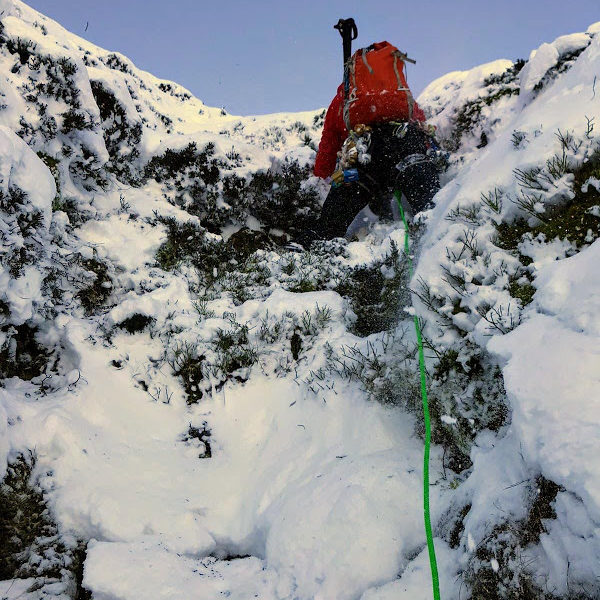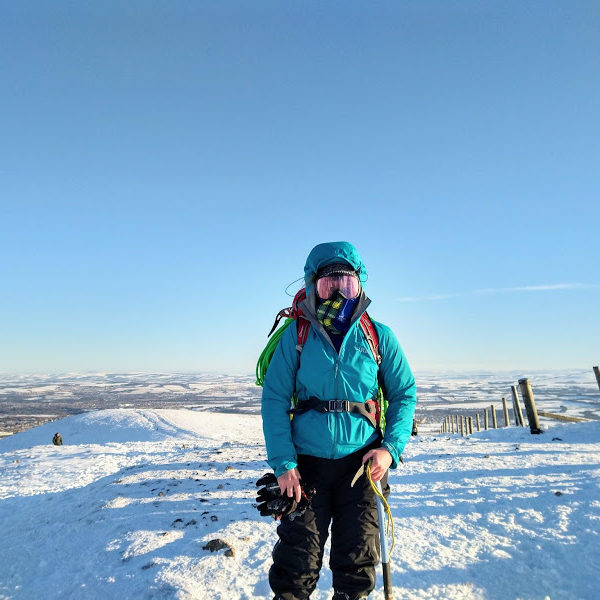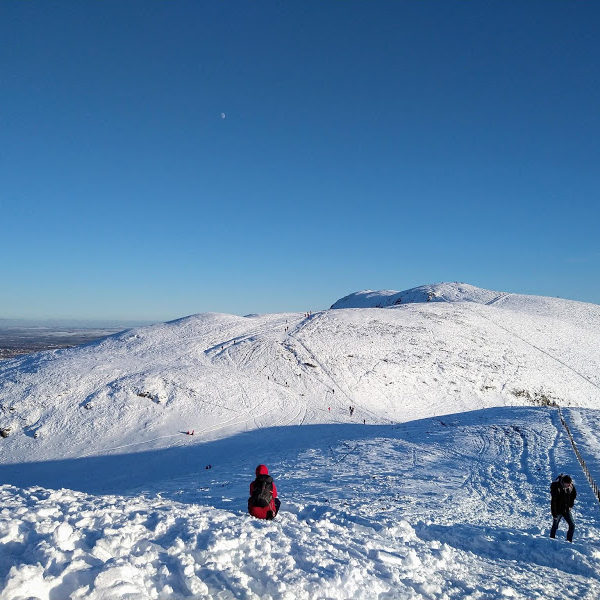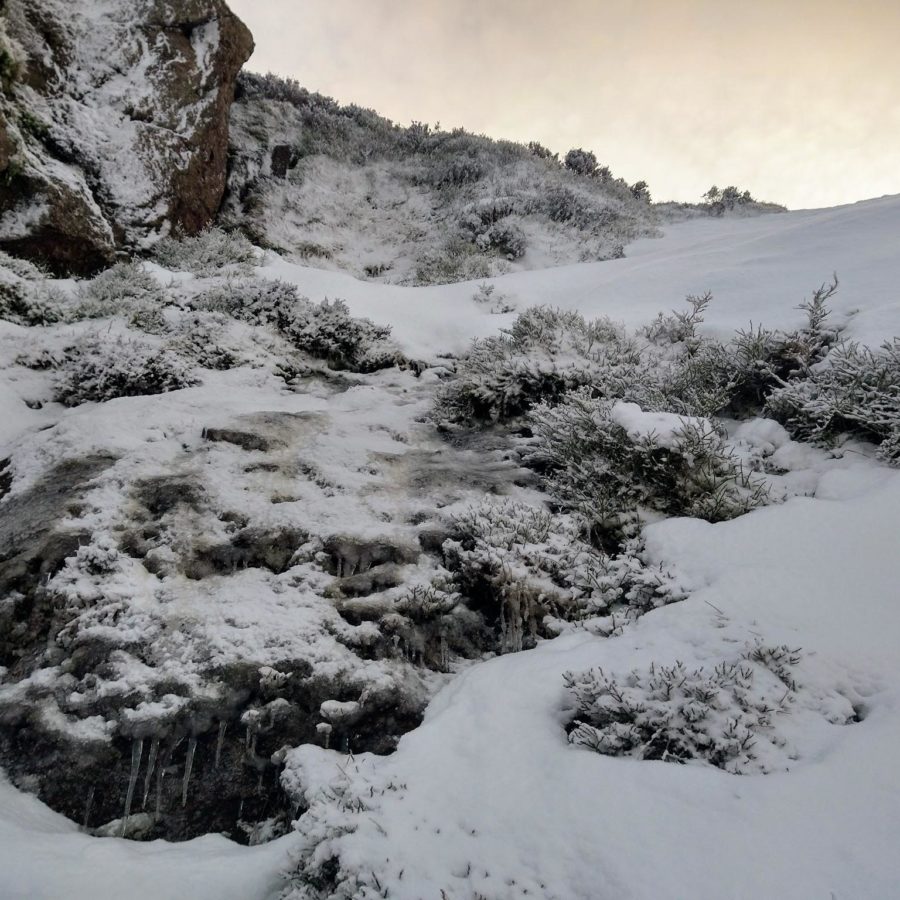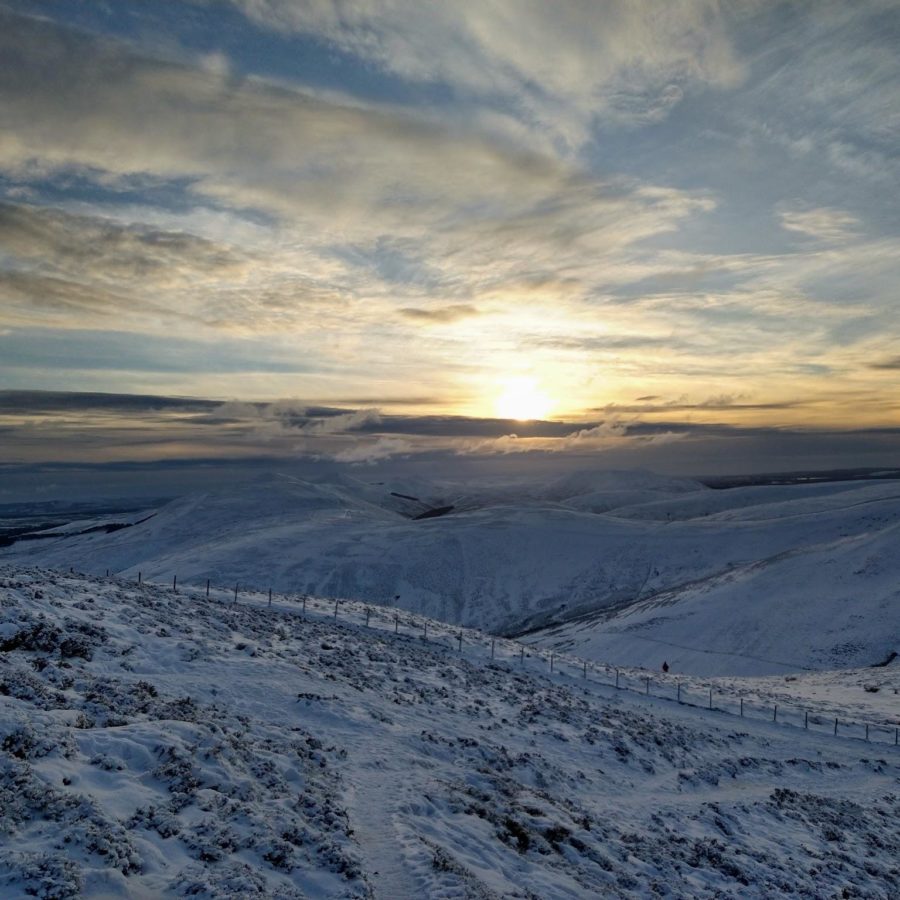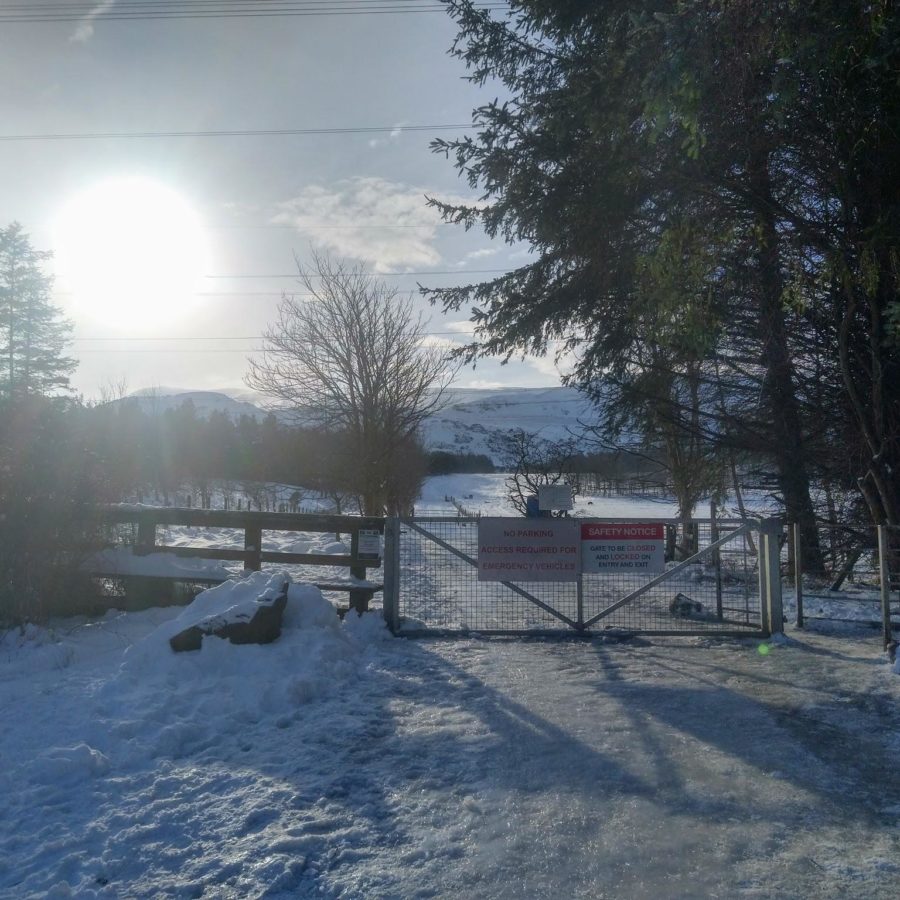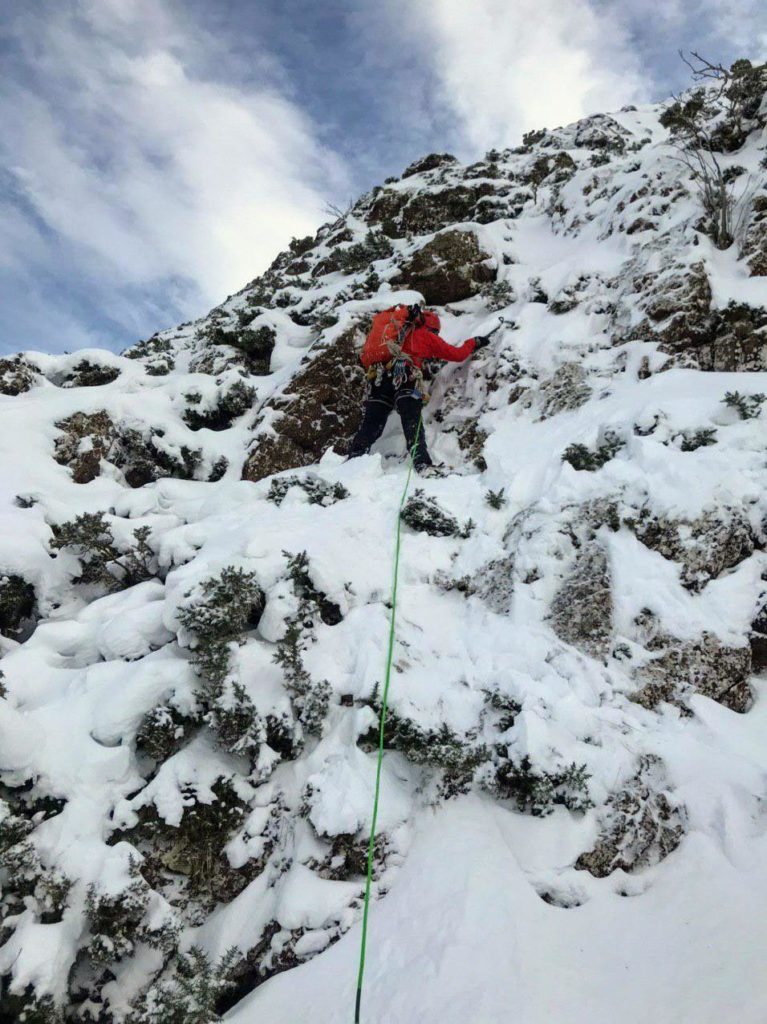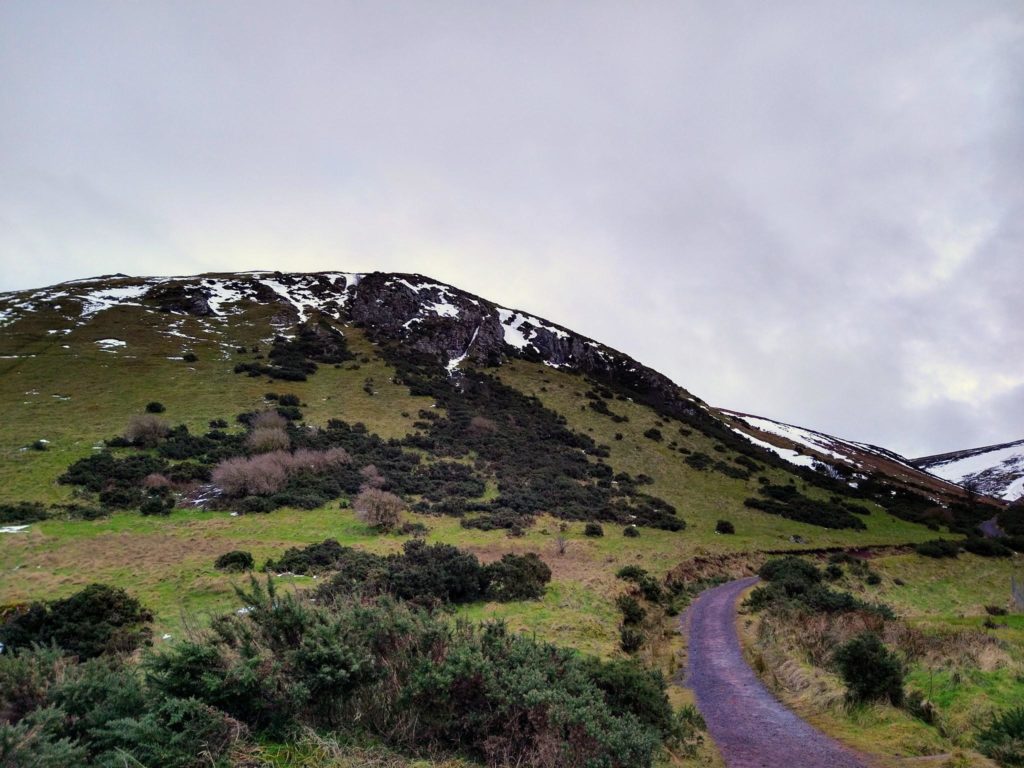As the Covid Pandemic limited access to “real hills”, my pack had swollen due to the snow covering outside. I then left my flat near the outskirts of Edinburgh with an internal debate: was carrying a winter pack required, it was only the Pentlands and the target, Castlelaw Hill, only 488m high; was it training for bigger objectives; or, was it an excuse to get out some “toys” that hadn’t been used in a while?
It soon transpired that the former was the popular answer as the crowds navigated the compacted and icy snow with minimal trouble. However, once the pumphouse was reached, the track headed upwards and it was clear the previous days’ hoards had kindly replaced the gravel road with a 2m strip of thick ice. A quick stop to lighten the pack but weight down my feet and up I went, crampon spikes digging into the ice while overtaking parties gingerly looking for traction on the verge. At the top of the steep part most parties headed for the adjacent Capelaw or Allermuir Hills, but my path diverged from the track further south with a short steep section to reach my summit.
Castlelaw Summit - Looking towards Scald Law
Castlelaw Summit - Looking towards Allermuir Hill and Caerketton Hill
After taking in the views on a wonderfully clear day and encountering a couple of runners, it was time to head home. Heading down the hill, occasionally looking slightly out place in my windproof jacket and winter boots against the massive “fashion” puffy jackets and “urban” footwear of my fellow hill goers and easily striding past a large group struggling to stay upright on the 30% steep bit, I pondered what conditions for winter climbing would be like if we weren’t restricted due to the pandemic. Then I remembered: the Pentlands has its own winter crags, Caerketton Hill and Green Crag.
Initial Exploration
The bulk of the Pentland winter climbing is located on Caerketton Hill, which was described as “vegetated and easy” and “suited for soloing” with eight mixed routes of Grade I and II. Given my lack of climbing partners with winter climbing experience, kit and motivation, this seemed the best local venue to start with. Therefore, a post work Friday evening expedition was mounted to investigate conditions.
Starting from the Swanston Car Park and going straight up, I quickly gained the 250m elevation and traversed to the base of the right secondary crag. While I was not intending to climb anything that evening, it seemed rude not to have a closer inspection of an easy looking gully.
Start of the unknown cleugh
Twenty minutes later I was on the summit of Caerketton and had completed a short unrecorded and unremarkable Grade I gulley - my first climb of 2021. A short walk down towards the dry ski slope and I was back to the car after only 2 hours 15 minutes on the hill.
Caerketton Return
Following the successful exploration the previous evening, I returned to Caerketton Hill on Saturday afternoon for a few hours of easy winter fun. After getting the last parking space in the Swanston Car Park, I powered up the hill for 45 minutes to reach the base of the main crag and the start of the initial objective for the day, Central Cleugh (Grade I). That’s “the central steep valley or ravine” for the non-natives.
Moving into the cleugh, revealed a pleasant snow covered heathery scramble flanked by steep, short and sharp ridges. Initially, efficient progress was made over the heather steps by plunging but the crag’s main technical quirk became clear on the slightly steeper top out. Whilst the turf was frozen, a large amount of it was covered in thick heather about a pick’s length deep. This culminated in the game of Truf or Heather - Solid or Sketchy. Thankfully, due to the easy and gentle nature of the route, pulling hard on axes wasn’t required and this never became serious.
The sides of Left Cleugh
A rather circuitous loop following the footsteps of the surprisingly ever present hillwalkers deposited me back at the base of the crag, but slightly further west and under Left Cleugh (Grade II). After several consultations with the route description, I concluded that UKC descriptions are as accurate and useful as the topos in certain guidebooks. Eventually I used my judgement to follow something that vaguely met the description but didn’t look overly steep and sketchy and topped out to be greeted with a blast of wind to the face, a recurring theme over the next few days.
Having made the decision to head home in an attempt to avoid aggravating my dodgy ankle, I set out for Byerside Hill and onwards to Allermuir Hill into a wind and conditions better associated with more remote mountainous locations, not a mile from Edinburgh’s outskirts. Upon reaching Allermuir Hill I turned away from the wind to begin the descent to the car park satisfied that if it remained cold more winter entertainment awaited and making predictions of my ankle’s response the next morning.
The crag from the Allermuir Hill descent.
As I’d agreed with my brother to take our mountain bikes “ice skating” on the Sunday, my next return to Caerketton was another evening trip. This time walking from my flat and in thawing conditions, culminating in a tick of the harder Right Hand variation of Right Cleugh. My route home was via Allermuir Hill in poor visibility and strong winds, happy with my choice of clear lensed goggles.
It was the following weekend before conditions allowed a return to the crag. This time, however, I had some company in the form of a climbing friend who was getting started in winter mountaineering. We did both variations of Right Cleugh with me leading trailing a rope on the harder sections. This highlighted that not only was the crag suited for soloing, it was also unsuited for roped climbing but after some thought adequate belays were found to safeguard the second. Even with my best efforts to make life difficult, we successfully topped out with a much harder finish to the Left Variation (supposed to be Grade I but the finish was highish Grade II). There was the obligatory trip to Allermuir Hill before returning to the car park.
The aim of the final trip to Caerketton Crag was to traverse the entire main crag, climbing all three buttresses and downclimbing the gulleys between them. At Grade I/II this is “A Medley of Mixed” and approximately an hour of continuous climbing that is the best at the crag and deserving of its star. By the last buttress, you could almost convince yourself you’re on a narrow Highland ridge (as long as you’re not looking at the city). The day was then completed via the Grade I Left Gulley on the right hand crag with a slight detour up a short chimney finish.
Intermission
Other than a midweek walk to Scald Law and its neighbours, East and West Kip, in low visibility and whiteout conditions at times, the following week’s thaw lead to less wintery pursuits.
Conditions in Green Cleugh
And conditions on the summit
These included riding my mountain bike sideways through mud and some introducing a friend to trad leading. Lesson one of “don’t trad climb when it’s 0℃ and snowing” required a practical demonstration. However, I did learn it’s possible to do something resembling a fist and foot jams in thick gloves and winter boots.
Practicing anchor construction
And putting it into practice (falling snow visible if you look closely)
Green Crag
On the return of snow and cold conditions midweek, I arranged a belayer and headed back into the Pentlands on the weekend. Instead of Caerketton Hill, we headed for Green Crag to try Edinburgh Lights (Grade III 4) armed with only a vague description of the route. Snow conditions were also different that day, the forecast for the last few days had been snow and wind with the crag being located on the leeward side of the hill. Investigating the map showed that the slopes flanking the crag were the optimum angle for avalanches, but the crag was too steep and the ground above too gentle. On the approach it was confirmed that the flanking slopes had deep snow cover, the crag had significantly less and the top out had been stripped by the wind.
We arrived at the base of the western face of the crag and what we assumed to be the start of the route, but the route upwards was not obvious. Undeterred, we geared up and started up a short rocky groove to see if we could find a route up. After finding a red tricam placement near the top of the groove, I continued out of the groove and onto a lower angled terrain. Here the snow changed from shallow cover to much deeper and softer. Scanning this snowfield, I spotted the next potential gear placement, a crack in the wall on the side of the snow and began crossing to it. Reaching the crack after some difficulty in the deep snow, I placed a black wallnut and extended it with a sling. Deciding the best route onwards was to follow the base of the wall, I continued up following the edge between the snow and the rock. Once I passed the last runner, the snow on my right started moving and then a sizable chunk of the snow slab slid down towards the belay. I dug my axes into the turf, mentally kicking myself for being too occupied in trying to find a route than what the snow was doing and was not thinking about potential snow build up in hallows/slabs. I should’ve noticed the change in angle, snow depth, softness and the extent of the slab, especially since I’d encountered and actively avoided similar conditions in hollows on Caerketton Hill and a larger area on Scald Law.
Once it was clear I wasn’t going anywhere, I downclimbed to the last bit of gear and made myself safe so the ropes could be sorted at the belay before being lowered. We then retrieved a pack that had been swept away and made the decision to investigate conditions on the northern facing part of the crag. Here we found the gully at the edge of the crag looked loaded but this part of the crag had been stripped leaving only a light snow cover and frozen turf. This sector of the crag was also steeper and didn’t have any obvious slabs/hollows for snow to accumulate so the decision to attempt a line here was made.
Starting off, with a new awareness of hidden and unstable areas of snow, I started off. From the start, there were significant and noticeable changes in conditions from around the corner. Here axe and foot placements were into solid turf or on rock and there was no requirement to dig them out first. Once established, we shouted across to a new party who were gearing up at the base of our previous climb to warn them of the conditions above, and ascended some steep and unprotected but easy ground to a groove and crack in a short wall above. A large offset in the crack was placed and became the first and only runner on the route. Conveniently, this was located beside the crux of the route, a 2-3m high almost vertical shallow groove with a series of small turf ledges in it. Other than clipping the rope the wrong side of an axe leash, easily rectified by unclipping the leash from the axe, the crux surmounted and easy ground reached. Battling through a gorse bush I reached a set of stakes and built a bomber anchor to bring the second up on.
After being joined by my second at the belay, all that was left was to retrieve the runner left on the first route - prussicking 30m up a rope is a lot harder than it sounds - and return to the car.
Conditions at the top
Epilogue
Two days later, it was clear someone had been playing with the thermostat and winter was over. The winter fun in the Pentlands had come to an end but the warmer and dryer weather allowed the commencement and continuation of other projects.




